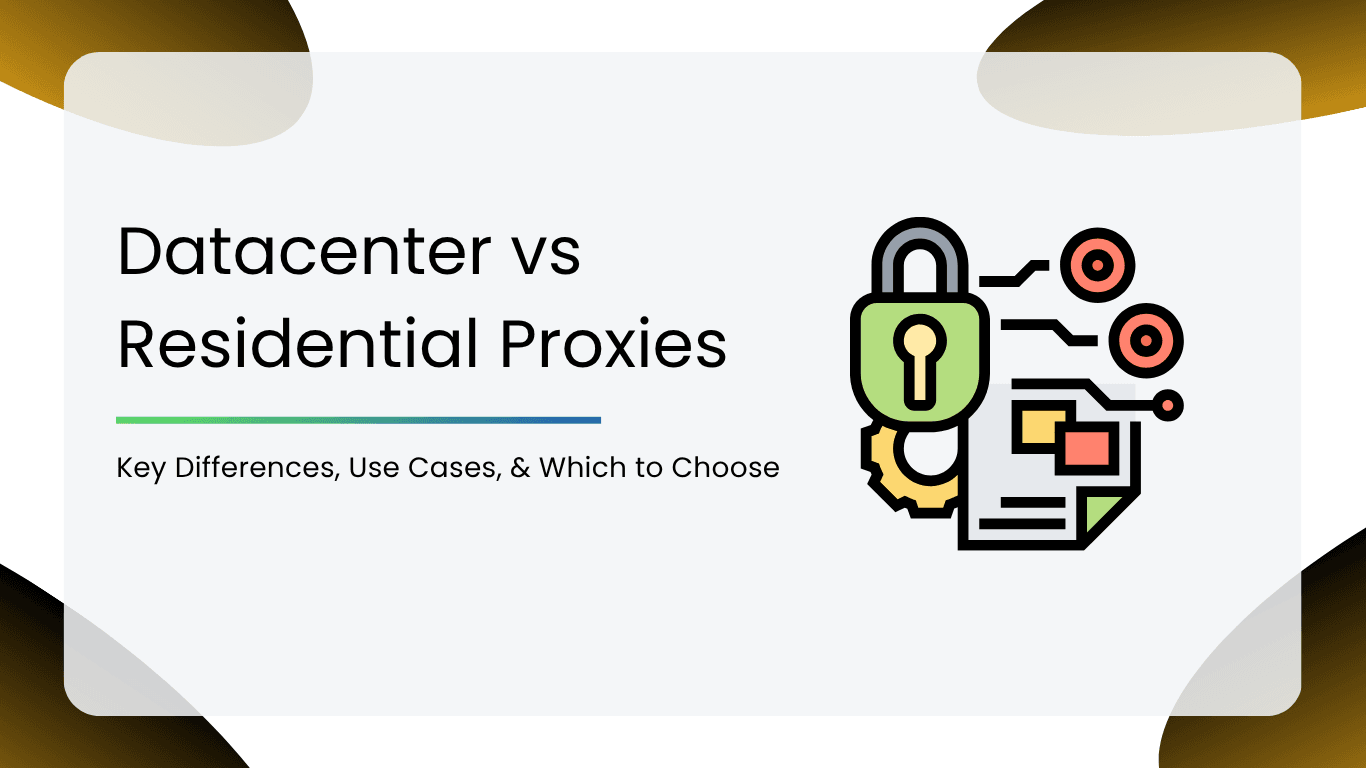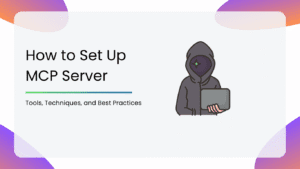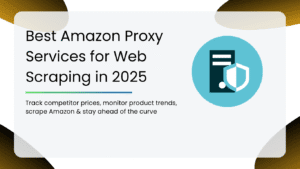Datacenter proxies and Residential Proxies. Both do the same job of masking your IP address, but they work in very different ways. Each comes with its own strengths, weaknesses, and ideal use cases.
Choosing the right one can make all the difference in how efficiently you scrape data, test ads, or manage multiple online accounts. In this guide, we’ll break down what makes Datacenter and Residential proxies different, how they work, where each one shines, and how to decide which is right for your needs.
What are Datacenter Proxies?
Datacenter proxies are IP addresses generated by data centers, now tied to any physical device or internet service provider (ISP). Instead of routing through a real household connection, these proxies come from cloud servers managed by third-party companies.
That independence from ISPs makes datacenter proxies fast, scalable, and ideal for high-volume operations. Because they’re created in bulk, you can get hundreds or even thousands of IPs at a fraction of the cost compared to residential ones.
However, since these IPs don’t belong to real users, websites can sometimes spot and block them more easily, especially on platforms with strict anti-bot systems.
Subcategories of Datacenter Proxies
| Proxy Type | Description | Best For | Pros | Cons |
| Shared Datacenter Proxies | Budget-friendly option where multiple users share the same IP pool. | Low-risk tasks like general SEO or price monitoring | Cost-effective, easy to get started | Higher block risk due to shared use |
| Dedicated Datacenter Proxies | Private IPs reserved for a single user. | Tasks requiring consistent speed and reliability | Faster, reliable, lower block risk | More expensive due to exclusivity |
Typical Use Cases
1. SEO Research: Track keyword rankings or competitor data at scale.
2. Web Scraping: Collect large amounts of public data quickly without slowing down.
3. Gaming: Reduce latency and access region-locked servers.
4. Performance Testing: Simulate traffic from different regions to test app or website performance.
What are Residential Proxies?
Instead of coming from a data center, these IPs are assigned by real Internet Service Providers (ISPs) to actual devices, like homes or offices. When you browse through a residential proxy, it looks like a legitimate user is accessing a site from a real location.
This “Real user” appearance makes residential proxies much harder for websites to detect or block. They mimic genuine traffic, allowing you to navigate platforms with strict anti-bot measures, access geo-restricted content, or test how websites behave in different locations.
Typical Use Cases
1. E-Commerce Research: Track product prices, stock, or competitor data without raising flags.
2. Social Media Management: Manage multiple accounts or monitor trends without being flagged.
3. Ad Verification: Ensure your ads are being served correctly in different regions.
4. Bypassing Geo-Blocks: Access content or services restricted to certain countries or regions.
Key Differences Between Datacenter and Residential Proxies
| Feature | Datacenter Proxies | Residential Proxies |
| IP Source | Data centers | ISPs (real users) |
| Speed | Very fast | Moderate to fast |
| Anonymity | Lower (easier to detect) | Higher (harder to detect) |
| Ban Risk | Higher | Lower |
| Geo-Targeting | Limited | Wide and precise |
| Price | Cheaper | Costlier |
| Best For | Bulk scraping, SEO monitoring | Geo-targeted scraping, ad testing |
When to Choose Datacenter vs Residential Proxies
So, how do you decide which proxy type is right for your project? Here’s a simple guide:
Choose Datacenter Proxies if you need:
1. High Speed: Quickly access and process large amounts of data.
2. Cost Efficiency: Get many IPs without breaking the budget.
3. Bulk Scraping: Ideal for general SEO research, monitoring prices, or collecting public data.
Choose Residential Proxies if you need:
1. High Anonymity: Stay under the radar and reduce the risk of blocks.
2. Access to Geo-Restricted Content: Reach websites or services limited to certain regions.
3. Real-User Trust Signals: Essential for managing multiple accounts, verifying ads, or performing tasks that require a human-like presence online.
Comparison Table of Top 5 Providers Offering Both Datacenter & Residential Proxies
| Provider | Key Strengths | Ease of Use | Geo Coverage |
| Decodo | Huge IP pool, enterprise-grade reliability | Moderate | 195+ locations |
| Bright Data | Balanced pricing, easy rotation setup | Very easy | 195+ locations |
| SmartProxy | Great analytics dashboard, powerful APIs | Moderate | 200+ locations |
| Oxylabs | Flexible location filters, reliable uptime | Easy | 195+ locations |
| SOAX | Affordable per-GB plans, 24/7 support | Very easy | 195+ locations |
Top 5 Providers Offering Both Datacenter & Residential Proxies
| Table of Contents |
| 1. Decodo |
| 2. Bright Data |
| 3. SmartProxy |
| 4. Oxylabs |
| 5. SOAX |
1. Decodo
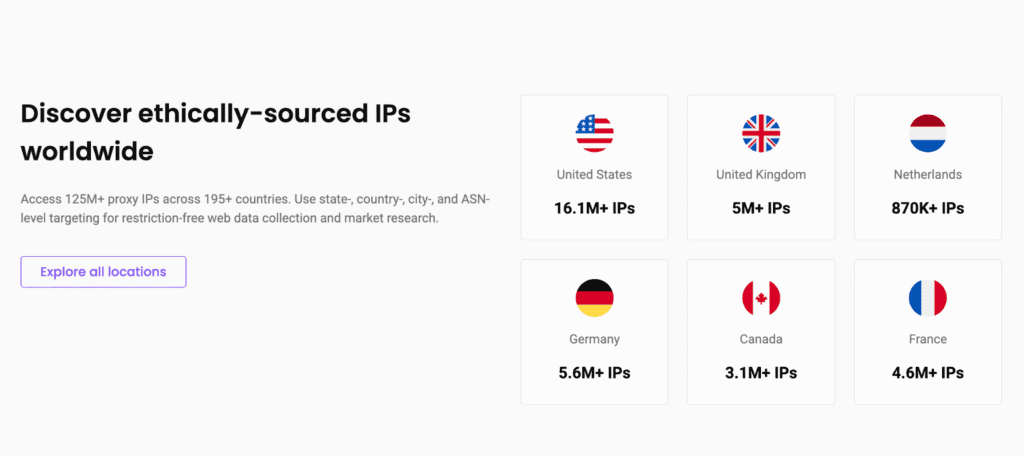
Decodo delivers both datacenter and residential proxies with flexible per-GB/IP pricing and 24/7 support. Their proxies are reliable and easy to manage, perfect for marketing, SEO research, or automating tasks that require stealthy, geographically diverse IPs.
2. Bright Data
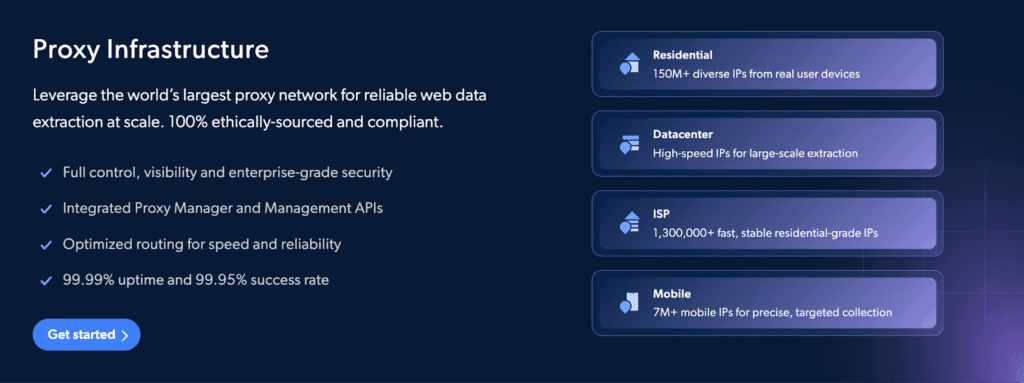
Bright Data offers a massive network of datacenter and residential proxies, perfect for large-scale scraping, SEO research, and ad verification. Their tools make it easier to rotate IPs, automate tasks, and manage proxies at scale. Reliability and ethical usage make it a trusted option for businesses needing robust, global coverage.
3. SmartProxy
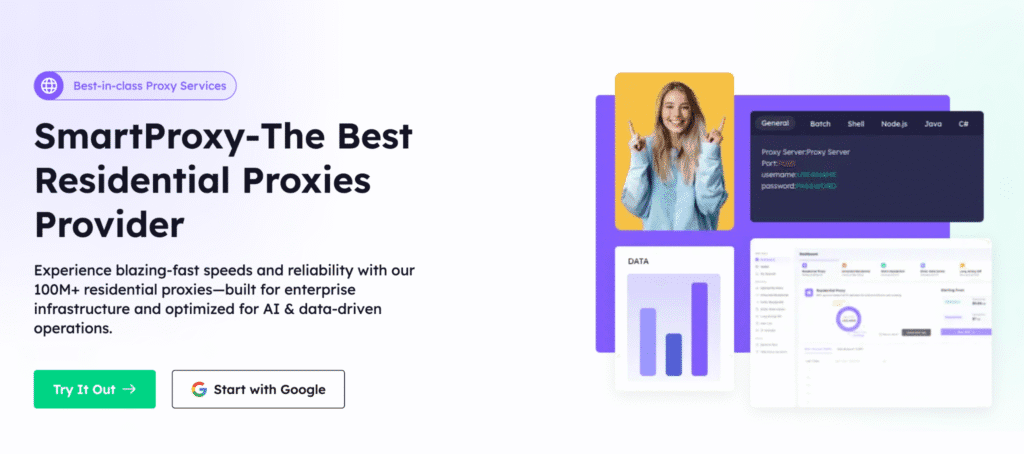
SmartProxy combines datacenter and residential proxies with over 100 million IPs worldwide. Their setup is beginner-friendly, with easy rotation and flexible pricing. It works well for marketers, social media managers, and developers who want fast, reliable proxies without complicated configurations.
4. Oxylabs
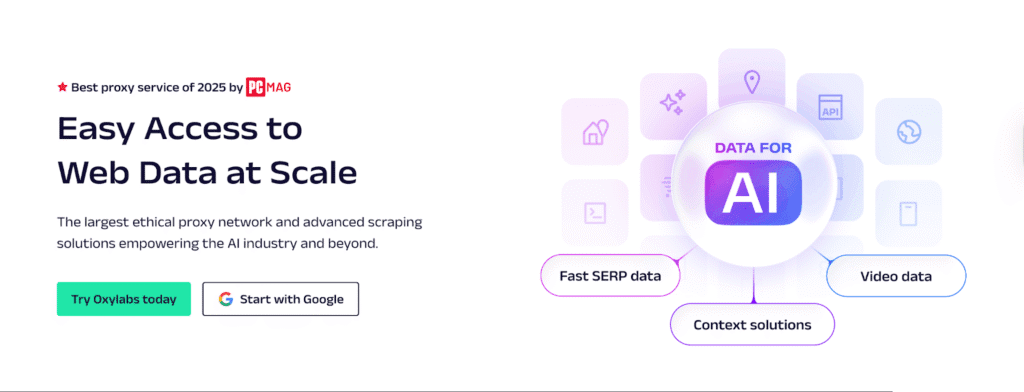
Oxylabs offers both datacenter and residential IPs, ideal for web scraping, ad verification, and e-commerce monitoring. Their Proxy Manager and API tools simplify rotation and automation, making it a great choice for teams that need large-scale, reliable proxy solutions.
5. SOAX
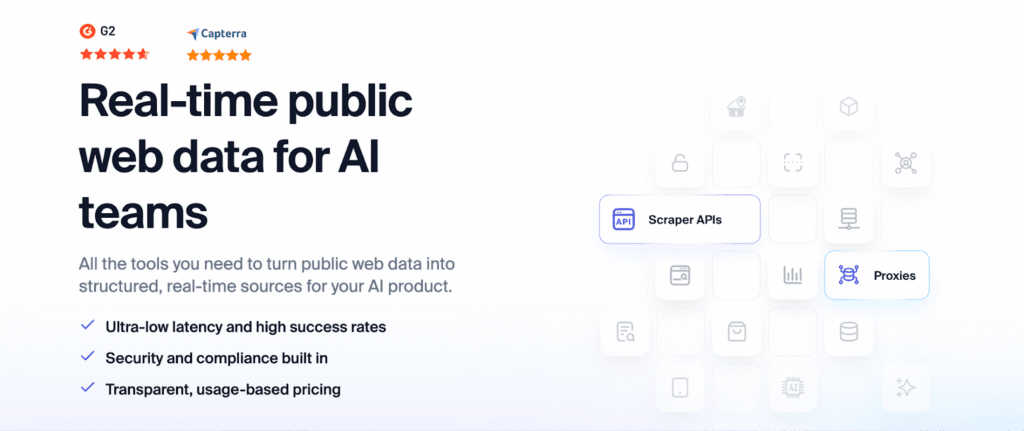
SOAX provides a huge pool of residential and datacenter proxies with strong geo-targeting options. Their platform ensures high uptime and fast connections, making it suitable for tasks like location-specific scraping, social media management, and ad testing.
At the end of the day, choosing a proxy is about matching the tool to your goal. The right choice depends on what you value most: efficiency or credibility. And remember, testing your setup with a smaller dataset first can save time and headaches down the line. Pick wisely, and your scraping and automation projects will run smoother than ever.
To read more 2025 proxy guides, check out our other blogs:
- Best Anonymous Proxies in 2025
- Best Elite Proxies in 2025
- Best Datacenter Proxies in 2025
- Best SOCKS5 Residential Proxies in 2025
FAQs
Yes. Using the same IP repeatedly or scraping aggressively can trigger blocks. To reduce risk, rotate IPs frequently, use residential or mobile proxies for sensitive tasks, and pace your requests to mimic real user behavior.
Absolutely. Using a mix can balance speed and trust. For example, datacenter proxies handle bulk scraping quickly, while residential proxies cover sensitive or geo-targeted tasks. Hybrid setups let you optimize efficiently without sacrificing reliability.
Yes. Always respect website terms of service, privacy policies, and local laws. Use proxies responsibly, avoid collecting sensitive personal data without consent, and never attempt to bypass security measures illegally.
– Python: You can pass your proxy as a parameter in requests or use libraries like httpx for rotation.
– Scrapy: Add your proxy details under DOWNLOADER_MIDDLEWARES or use a rotating proxy middleware for automation.
– Browsers: Simply go to your network or extension settings and enter your proxy credentials. Most providers offer step-by-step guides.
Disclosure – This post contains some sponsored links and some affiliate links, and we may earn a commission when you click on the links at no additional cost to you.

